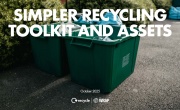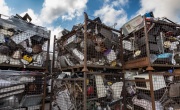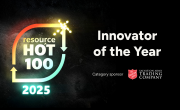Global framework sets baseline for measuring food waste
A framework designed to help businesses and governments measure, report on and manage their food loss and waste has been launched today (6 June) by a partnership of international organisations and associations.
 The Food Loss and Waste Accounting and Reporting Standard has been in development for three years and sets global definitions and reporting requirements, providing a consistent measure by which to assess future action against food loss and waste.
The Food Loss and Waste Accounting and Reporting Standard has been in development for three years and sets global definitions and reporting requirements, providing a consistent measure by which to assess future action against food loss and waste.
Across the supply chain, an estimated one-third of all food is lost or wasted globally, costing up to US$940 billion (£650 billion) per year. Food loss and waste generates about eight per cent of global greenhouse gas emissions, meaning if it were a country, food loss and waste would be the third largest greenhouse gas emitter behind China and the United States.
While the problem of food waste is increasingly recognised, the Food Loss & Waste Protocol (FLWP) – a multi-stakeholder partnership convened by the World Resources Institute (WRI) – says that most do not know how much food is lost or wasted or where it occurs within their borders, operations or supply chains.
Moreover, the definition of food loss and waste varies widely, and without a consistent accounting and reporting framework, the group suggests that it is difficult to compare data and develop effective strategies.
The standard was launched today at the Global Green Growth Forum (3GF) 2016 Summit in Copenhagen.
FLWP partners include a number of governmental, global and industry-driven groups. They are: the Consumer Goods Forum (CGF), the Food and Agriculture Organization of the United Nations (FAO), the EU-funded FUSIONS project, the United Nations Environment Programme (UNEP), the World Business Council for Sustainable Development (WBCSD), the Waste & Resources Action Programme (WRAP) and the WRI.
Consistency
The CGF is an industry network of around 400 retailers, manufacturers and service providers from around the world. Last summer it announced its commitment to halving food waste within the operations of its members by 2025. This reflects the UN Sustainable Development Goal agreed by member states in September last year to halve per capita global food waste at the retail and consumer levels by 2030 and to reduce food losses along supply chains.
Development of the Food Loss and Waste Accounting and Reporting Standard will, the FLWP hopes, help to meet these goals by setting a consistent benchmark and enabling organisations and governments to locate and work on the areas causing the most food waste.
At present, definitions for what is actually considered food waste vary, with some suggesting that any food that is no longer fit for human consumption is food waste, while others holding the view that spoiled food that is used for animal feed or sent to anaerobic digestion remains in the energy chain and cannot be considered wasted.
There is also disagreement on what constitutes food, with inedible parts like rinds, skins and bones falling either side of the definition argument. The standard seeks to remove this ambiguity and also to set out a standard way of measuring food waste.
Mark Little, Head of Food Waste Reduction at Tesco, one of the CGF members that has taken part in a pilot of the framework, explained that while the supermarket scans each item that is out of date and calculates the total weight through that in a ‘bottom-up’ approach, others weigh bins at the back of stores, taking in packaging waste and anything else that may be included. This also does not enable organisations to locate any specific products that are contributing a significant proportion to their waste and therefore act on the food waste hotspots.
Using accounting tool to implement changes
Nestlé is another company to have piloted the framework, and Pascal Gréverath, the company’s Assistant Vice President for Environmental Sustainability, said that use of the protocol in its Pakistan supply chain has led to reductions in food loss.
A study carried out by the company using the accounting framework showed that on average 15 to 19 per cent of fresh milk in Pakistan was wasted on its way to the market, but Gréverath said that the figure has now been reduced to 1.4 per cent, after introducing cooling storage to villages.
Baseline for action
Achim Steiner, Executive Director of the UNEP, said: “The scale of the problem of food loss and waste can be difficult to comprehend. Having this new standard by which to measure food loss and waste will not only help us understand just how much food is not making it to our mouths, but will help set a baseline for action.”
Toine Timmermans, Project Coordinator for EU-FUSIONS, added: “Measuring the level of food waste in a structured way is critical for developing effective strategies that focus on reducing food waste and monitoring progress at the business, national and EU level, as well as contributing to the achievement of SDG Target 12.3.”
The WRI-driven framework follows on from the Champions 12.3 Coalition launched earlier this year. The coalition, a mix of CEOs, government ministers, executives of research institutions, farmer organisations and civil society groups, has been devised to ‘inspire ambition and mobilise action’ to reduce food waste and loss globally, in keeping with the UN goal to halve food waste by 2030.
More information on the Food Loss and Waste Accounting and Reporting Standard and the standard itself can be found on the Food Loss & Waste Protocol website.






